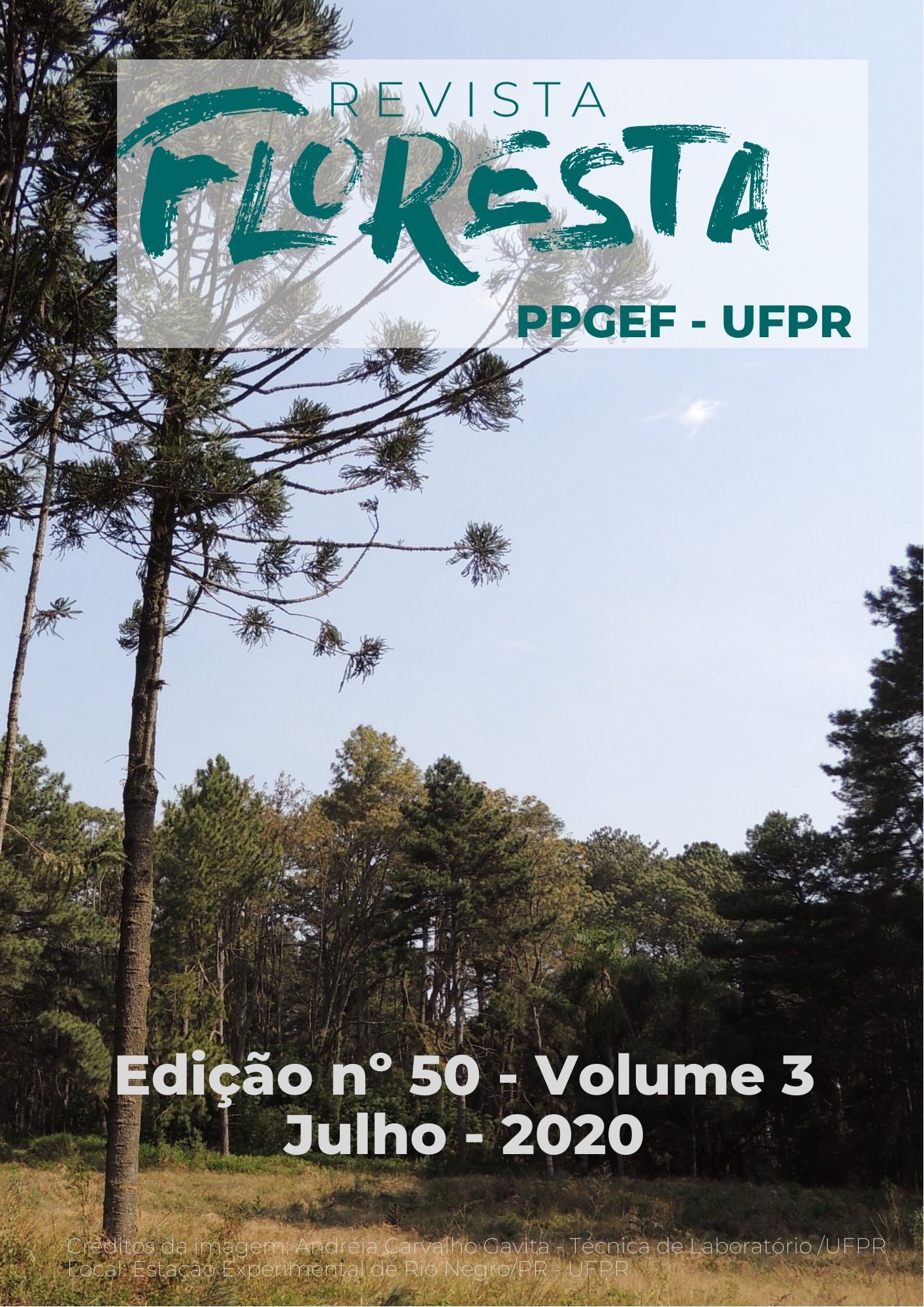ANATOMICAL CHARACTERIZATION OF WOOD MARKETED AS “TAUARI” (LECYTHIDACEAE) IN PARÁ STATE, BRAZIL
DOI:
https://doi.org/10.5380/rf.v50i3.59399Palavras-chave:
Identificação, Couratari, Eschweilera, Erisma, CedrelaResumo
Anthropogenic pressure on the forest resources of the Brazilian Amazon, partly caused by illegal logging, has contributed to increase the list of endangered Brazilian flora species, as is the case of some representatives of the family Lecythidaceae. In this way, aiming to contribute to the control of the illegal cutting of the trees, the objective of this study was to identify and characterize samples of wood marketed as belonging to the “tauari” group, in order to provide support for species-level identification. Samples were obtained from 15 sawmills in 10 municipalities in the state of Pará in June and July 2016. The species identification was confirmed by comparison with standard samples from the wood collections of Museu Paraense Emílio Goeldi and Embrapa Amazônia Oriental. Three samples were identified as not belonging to the “tauari” group: Eschweilera sp. (matamatá-branco), Cedrela sp. (cedro) and Erisma uncinatum (cedrinho). The other 17 samples belonged to the “tauari” group with three distinct species: Couratari stellata, C. oblongifolia and C. guianensis. All species from Lecythidaceae family presented similarity in anatomical structure of wood, at macroscopic and microscopic level. The adoption of a single popular name by logging companies in the state of Pará to designate timber from the “tauari” group masks information about the diversity of species traded and compromises the end use of timber and the trust between buyer and seller.
Downloads
Publicado
Como Citar
Edição
Seção
Licença
Direitos Autorais para artigos publicados nesta revista são do autor, com direitos de primeira publicação para a revista. Em virtude da aparecerem nesta revista de acesso público, os artigos são de uso gratuito, com atribuições próprias, em aplicações educacionais e não-comerciais.A revista, seguindo a recomendações do movimento Acesso Aberto, proporciona acesso publico a todo o seu conteudo, seguindo o principio de que tornar gratuito o acesso a pesquisas gera um maior intrcambio global de conhecimento.
Conteúdos do periódico licenciados sob uma CC BY-NC-SA 4.0



